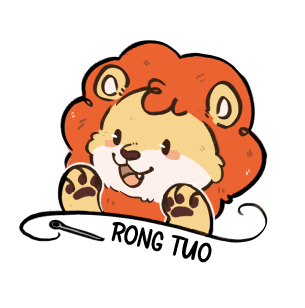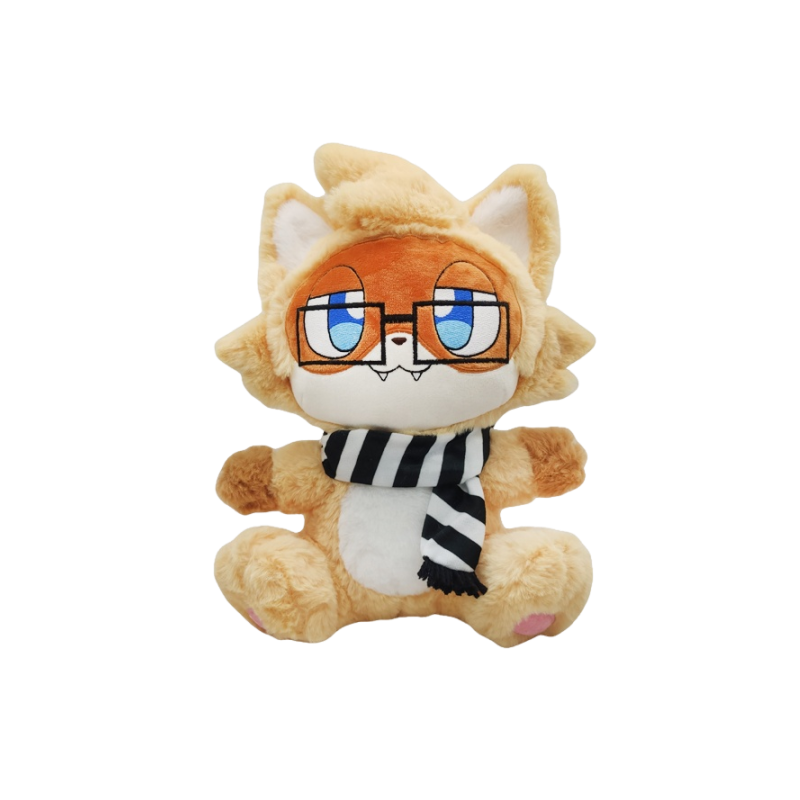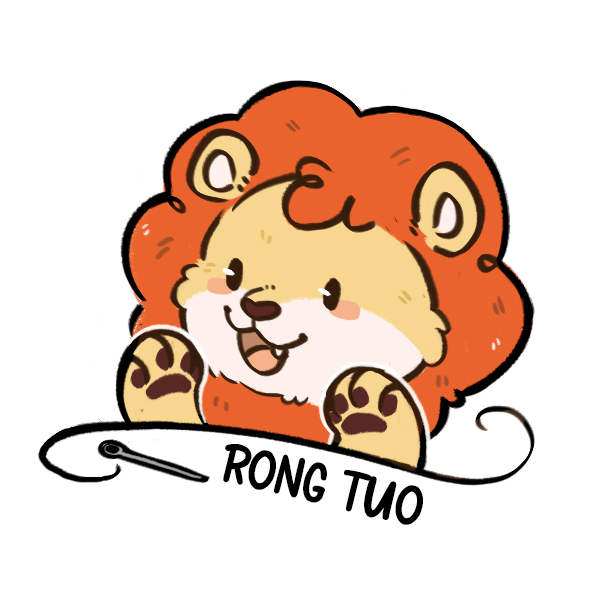Når det kommer til at skabe plyslegetøj, spiller materialerne en stor rolle for deres kvalitet og følelse. Tilpassede plysproducenter udvælger omhyggeligt stoffer, fyld og tilbehør for at sikre, at hvert legetøj er blødt, holdbart og sikkert. Du vil ofte finde stoffer som polyester for dets alsidighed, bomuld for dets naturlige touch eller akrylpels for realistiske teksturer. Indvendigt holder fyld som polyesterfiber fyld legetøjet let og kan krammes. Tilbehør såsom plastikøjne eller broderitråd tilføjer personlighed og bevarer sikkerheden. Hvert materiale bringer noget unikt, hvilket gør hvert overdådigt legetøj specielt.
Stoffer: Fundamentet af plyslegetøj
Når du tænker på plyslegetøj, er det første, der nok kommer til at tænke på, hvor bløde og kælne de føles. Det er alt takket være de stoffer, der bruges af brugerdefinerede plysproducenter. Disse stoffer danner det ydre lag af legetøjet, hvilket giver det dets tekstur, udseende og overordnede charme. Lad os dykke ned i nogle af de mest almindelige stoffer, og hvorfor de er så vigtige.
Almindelige stoffer, der bruges af brugerdefinerede plysproducenter
Polyester: Et slidstærkt, alsidigt stof med en blød tekstur, meget brugt i plys fremstilling.
Polyester er et valg for mange producenter af specialdesignede plys. Det er blødt, holdbart og nemt at arbejde med, hvilket gør det perfekt til at skabe plyslegetøj, der holder. Dette stof holder formen godt, så dit overdådige legetøj forbliver flot selv efter utallige kram og vaske. Plus, den fås i en række forskellige finish, fra glat og slank til fluffy og fuzzy, hvilket giver dig masser af muligheder for forskellige designs.
Bomuld: En naturlig, åndbar mulighed, der ofte vælges til miljøvenligt plyslegetøj.
Hvis du leder efter noget naturligt, er bomuld en fremragende mulighed. Den er åndbar, let og har en blød, behagelig følelse. Mange producenter af brugerdefinerede plys bruger bomuld til miljøvenlige designs, da det er biologisk nedbrydeligt og skånsomt for miljøet. Bomuld fungerer også godt til legetøj beregnet til babyer eller småbørn, takket være dets hypoallergene egenskaber.
Fleece: Kendt for sin varme og blødhed, ideel til nuttede designs.
Fleece er et andet populært stof, især til plyslegetøj designet til at være ekstra hyggeligt. Dens varme og blødhed gør den til en favorit til vinter-tema-legetøj eller karakterer, der skal føles som et varmt kram. Fleece er også let og let at rengøre, hvilket bidrager til dens appel for både producenter og kunder.
Akrylpels: Bruges til realistisk dyreplyslegetøj eller til at tilføje tekstur til karakterdesign.
For plyslegetøj, der har brug for et strejf af realisme, er akrylpels vejen at gå. Dette stof efterligner udseendet og følelsen af ægte pels, hvilket gør det ideelt til dyre-tema design. Uanset om det er en løvemanke eller en fluffy kaninhale, tilføjer akrylpels tekstur og karakter til dit plyslegetøj. Brugerdefinerede plysproducenter bruger det ofte til at skabe naturtro detaljer, der skiller sig ud.
Hvorfor stofvalg er vigtigt
Det stof, du vælger til et overdådigt legetøj, handler ikke kun om udseende. Det spiller en stor rolle for, hvordan legetøjet føles, hvor længe det holder, og hvor nemt det er at passe. Her er grunden til, at stofvalget er så vigtigt:
Indvirkning på plyslegetøjets tekstur, følelse og overordnede kvalitet.
Stoffet bestemmer, hvordan legetøjet føles, når du holder det. Et blødt, glat stof som polyester skaber en beroligende touch, mens en tekstureret mulighed som akrylpels tilføjer personlighed. Det rigtige stof kan højne legetøjets generelle kvalitet, hvilket gør det mere tiltalende og behageligt.
Holdbarhed og nem rengøring til langtidsbrug.
Holdbarhed er nøglen, især for legetøj, der vil se en masse kærlighed. Stoffer som polyester og fleece er hårde nok til at håndtere slid og ælde, mens de forbliver bløde og nuttede. Materialer, der er nemme at rengøre, gør også livet lettere for forældre, hvilket sikrer, at legetøjet forbliver frisk og sikkert til leg.
Brugerdefinerede plysproducenter udvælger omhyggeligt stoffer for at balancere disse faktorer og sikrer, at hvert plyslegetøj ikke kun er yndigt, men også praktisk. Uanset om du designer et legetøj til børn, samlere eller nogen midt imellem, sætter det stof, du vælger, grundlaget for dets succes.
Fyldningsmaterialer: Hvad er der inde i plys?
Magien ved et overdådigt legetøj stopper ikke ved dets ydre stof. Det, der er indeni, spiller en stor rolle for, hvordan det føles, holder sin form, og endda hvor meget du vil kramme det. Tilpassede plysproducenter vælger omhyggeligt fyldmaterialer for at sikre, at hvert plyslegetøj leverer den perfekte balance mellem blødhed, struktur og holdbarhed. Lad os undersøge nogle populære fyldmuligheder, og hvad der gør dem specielle.
Populære fyldningsmuligheder
Polyesterfiberfyld: Let, blød og hjælper med at bevare plyslegetøjets form.
Polyesterfiberfyld er et af de mest almindelige fyldmaterialer, du finder i plyslegetøj. Den er let og utrolig blød, hvilket gør den ideel til at skabe den krammelige følelse. Dette materiale hjælper også legetøjet med at bevare sin form over tid, selv ved hyppig brug. Hvis du nogensinde har krammet et plyslegetøj, der føltes som en sky, er chancerne for, at det var fyldt med polyesterfiberfyld.
Plast piller: Det giver vægt og struktur, som ofte bruges i pelselegetøj.
Plastpiller giver plyslegetøj et unikt præg. De tilføjer vægt og struktur, hvilket kan få legetøjet til at føles mere solidt i dine hænder. Disse bruges ofte i plyslegetøj i sækkestol eller design, hvor der er brug for lidt ekstra tyngde. Pellets giver også mulighed for en sjov, squishy tekstur, som mange mennesker elsker.
Memory skum: Giver en fastere, mere struktureret fornemmelse for specifikke designs.
Til plyslegetøj, der har brug for en fastere følelse, er memoryskum et fantastisk valg. Den former sig efter din hånds form, når den klemmes og vender langsomt tilbage til sin oprindelige form. Dette gør den perfekt til designs, der kræver mere struktur eller en førsteklasses følelse af høj kvalitet. Memory skum fyld kan hæve et plyslegetøj og give det et unikt og luksuriøst præg.
Miljøvenlige alternativer: Inkluderer genanvendt fiberfyldning og organisk bomuldsfyldning.
Hvis bæredygtighed betyder noget for dig, er miljøvenlige fyldningsmuligheder værd at overveje. Genbrugsfiberfyld, lavet af genbrugte materialer, giver samme blødhed og holdbarhed som traditionel polyester. Økologisk bomuldsfyld giver et naturligt, allergivenligt alternativ, der er skånsomt for miljøet. Disse muligheder giver dig mulighed for at nyde dit plyslegetøj, mens du gør en positiv indvirkning.
Nøgleovervejelser for fyld
Hvordan fyld påvirker plyslegetøjets form, blødhed og krammelighed.
Typen af fyld påvirker direkte, hvordan et overdådigt legetøj føles i dine hænder. Bløde materialer som polyesterfiberfyld skaber et kælent, let legetøj, mens fastere muligheder som memoryskum tilføjer struktur. Det rigtige fyld sikrer, at legetøjet holder sin form og forbliver behageligt at kramme, uanset hvor ofte du bruger det.
Sikkerheds- og allergivenlige egenskaber til børn og følsomme brugere.
Sikkerhed er altid en topprioritet, især for legetøj designet til børn. Hypoallergene fyldmaterialer, såsom økologisk bomuld eller visse typer polyester, reducerer risikoen for allergiske reaktioner. Tilpassede plysproducenter sikrer også, at fyldmaterialer opfylder sikkerhedsstandarderne, så du kan føle dig sikker på legetøjets kvalitet og egnethed.
Når det kommer til fyld, er ethvert valg vigtigt. Uanset om du foretrækker blødheden af polyesterfiberfyld, vægten af plastikpiller eller miljøvenligheden af genbrugsmaterialer, er der en mulighed, der matcher dine behov. Det rigtige fyld forvandler et plyslegetøj fra almindeligt til ekstraordinært, hvilket gør det til en fornøjelse at holde og værne om.
Tilbehør og udsmykning: Tilføjelse af personlighed
Tilbehør og pynt giver plyslegetøj deres unikke charme. De bringer karakterer til live, tilføjer udtryk, detaljer og personlighed. Brugerdefinerede plysproducenter bruger en række forskellige materialer til at fremstille disse funktioner, hvilket sikrer, at de både er visuelt tiltalende og sikre for brugerne.
Materialer til ansigtstræk og detaljer
Detaljerne på et overdådigt legetøjs ansigt eller krop kan få det til at skille sig ud. Uanset om det er et par glitrende øjne eller et sammensyet smil, definerer disse elementer legetøjets karakter. Her er nogle almindelige materialer, der bruges til disse funktioner:
Plast: Almindeligvis brugt til øjne og næser, fås i forskellige former og størrelser.
Plast er et populært valg til at skabe øjne og næser. Den er holdbar, let og kommer i utallige former, størrelser og farver. Du har sikkert set skinnende sorte øjne eller farverige, glitrende øjne på plyslegetøj. Disse plastikstykker tilføjer dybde og realisme til legetøjets ansigt. Producenter vælger ofte plastik, fordi det er nemt at rengøre og holder godt over tid.
Broderitråd: Bruges til syede detaljer, hvilket giver en sikker og holdbar mulighed.
Broderitråd er perfekt til at tilføje syede detaljer som smil, øjenbryn eller endda indviklede mønstre. Det er en sikker mulighed, især for legetøj beregnet til små børn, da der ikke er nogen risiko for, at små dele løsner sig. Tråden giver også mulighed for kreative designs, hvilket giver legetøjet et håndlavet, personligt præg. Derudover er den stærk nok til at modstå årevis med kram og leg.
Filt: Et blødt, alsidigt materiale til tilføjelse af dekorative elementer.
Filt er en anden favorit til pynt. Den er blød, nem at skære og fås i en regnbue af farver. Producenter bruger filt til at skabe funktioner som ører, plastre eller andre dekorative elementer. Dens alsidighed gør den ideel til at tilføje unikke detaljer til et overdådigt legetøjs design. Filt blander sig også problemfrit med andre stoffer og forbedrer det overordnede look uden at overdøve det.
Sikkerhed og æstetiske overvejelser
Når det kommer til tilbehør, går sikkerhed og æstetik hånd i hånd. Producenter skal balancere kreativitet med praktisk for at sikre, at legetøjet er både smukt og sikkert at bruge.
Sikring af tilbehør er sikkert fastgjort for at forhindre kvælningsfare.
Sikkerhed er en topprioritet, især for legetøj designet til børn. Tilbehør som plastøjne eller filtdekorationer skal være forsvarligt fastgjort for at forhindre dem i at løsne sig. Producenter bruger ofte stærke syninger eller specialiserede klæbemidler til at holde disse elementer på plads. Dette sikrer, at legetøjet forbliver sikkert, selv under hård leg.
Matchende udsmykning til plyslegetøjets design og målgruppe.
Valget af udsmykning afhænger af legetøjets design og hvem det er beregnet til. For eksempel kan et overdådigt legetøj til småbørn have broderede øjne i stedet for plastik for ekstra sikkerhed. På den anden side kan et samlerobjekt indeholde indviklede detaljer som pailletter eller metalliske accenter. Ved at skræddersy tilbehøret til legetøjets formål skaber producenterne designs, der går i genklang hos deres publikum.
Tilbehør og pynt er mere end bare dekorativt. De definerer personligheden af et plyslegetøj, hvilket gør det mindeværdigt og elskeligt. Uanset om det er et par blinkende øjne eller et syet hjerte, forvandler disse detaljer et simpelt legetøj til noget helt særligt.
Tilpasningsovervejelser: Skræddersy materialer til dine behov
Når du designer et skræddersyet plyslegetøj, kan de materialer, du vælger, skabe eller bryde dit syn. Hver detalje betyder noget, fra stoffets tekstur til fyldets fornemmelse. Skræddersyede plysproducenter forstår dette og skræddersyer deres materialevalg til at opfylde dine specifikke behov. Lad os undersøge de faktorer, der påvirker disse beslutninger, og de seneste trends, der former industrien.
Faktorer, der påvirker materialevalg
Design kompleksitet: Hvordan indviklede mønstre kan kræve bestemte stoffer eller dekorationer.
Kompleksiteten af dit design spiller en stor rolle i materialevalg. Hvis dit plyslegetøj har detaljerede funktioner som broderede mønstre eller teksturerede overflader, skal du bruge stoffer og pynt, der kan klare det forviklinger. For eksempel fungerer fleece godt til glatte, enkle former, mens akrylpels tilføjer dybde til dyredesign. At vælge de rigtige materialer sikrer, at dit overdådige legetøj ser ud præcis, som du havde forestillet dig.
Budgetbegrænsninger: Balancering af omkostninger med kvalitet og holdbarhed.
Dit budget vil også styre materialevalg. Stoffer af høj kvalitet som f.eks. økologisk bomuld eller memoryskum-fyld kan koste mere, men de giver holdbarhed og en førsteklasses følelse. På den anden side er polyester en omkostningseffektiv mulighed, der ikke går på kompromis med blødhed eller alsidighed. Skræddersyede plysproducenter hjælper dig med at finde den perfekte balance mellem overkommelighed og kvalitet, så du får den bedste værdi for pengene.
Målgruppe: At vælge materialer, der er sikre og tiltalende for børn, samlere eller andre demografiske grupper.
Hvem skal bruge dit plyslegetøj? Dette spørgsmål er nøglen, når du vælger materialer. For børn er sikkerheden topprioritet. Hypoallergen fyld og sikkert fastgjort tilbehør sikrer, at legetøjet er sikkert for små. For samlere kan unikke stoffer som fløjl eller indviklede udsmykninger tilføje et strejf af luksus. At forstå dit publikum hjælper dig med at skabe et overdådigt legetøj, der giver genlyd hos dem.
Trends i Custom Plys Manufacturing
Stigende efterspørgsel efter bæredygtige og miljøvenlige materialer.
Bæredygtighed er mere end en trend – det er en bevægelse. Mange mennesker foretrækker nu plyslegetøj lavet af miljøvenlige materialer. Genanvendt polyester, økologisk bomuld og biologisk nedbrydeligt fyld er ved at blive populære valg. Disse muligheder reducerer ikke kun miljøpåvirkningen, men appellerer også til kunder, der værdsætter grøn praksis. Skræddersyede plysproducenter omfavner dette skift og tilbyder mere bæredygtige løsninger end nogensinde før.
Fremskridt inden for stofteknologi for forbedret blødhed og holdbarhed.
Stofteknologien er nået langt. Moderne materialer er blødere, mere holdbare og nemmere at rengøre. Innovationer som mikrofiberstoffer giver en ultrablød fornemmelse, mens avancerede polyesterblandinger modstår slid. Disse fremskridt giver dig mulighed for at skabe plyslegetøj, der er både luksuriøst og langtidsholdbart. Holder du dig opdateret på denne udvikling sikrer du, at dine designs forbliver konkurrencedygtige og tiltalende.
Tilpasning handler om at gøre dit plyslegetøj unikt. Ved at overveje designkompleksitet, budget og publikum kan du vælge materialer, der bringer din vision ud i livet. Og ved at følge med i trends som bæredygtighed og stofinnovation kan du skabe legetøj, der skiller sig ud på dagens marked. Brugerdefinerede plysproducenter er her for at guide dig hvert trin på vejen og sikre, at dit plyslegetøj er lige så specielt, som du forestillede dig.
Skræddersyede plysproducenter bringer dine plyslegetøjsideer til live ved at kombinere de rigtige stoffer, fyld og tilbehør. Hvert materiale tjener et formål, uanset om det er at tilføje blødhed, sikre holdbarhed eller prioritere sikkerhed. Ved at forstå disse materialer kan du træffe smartere valg, når du designer eller køber plyslegetøj. Uanset om du vil have noget miljøvenligt, luksuriøst eller børnesikkert, hjælper det dig med at skabe eller vælge det perfekte legetøj at vide, hvad der er i legetøjet. De rigtige materialer gør hele forskellen i at lave et plyslegetøj, der er både elskeligt og langtidsholdbart.


